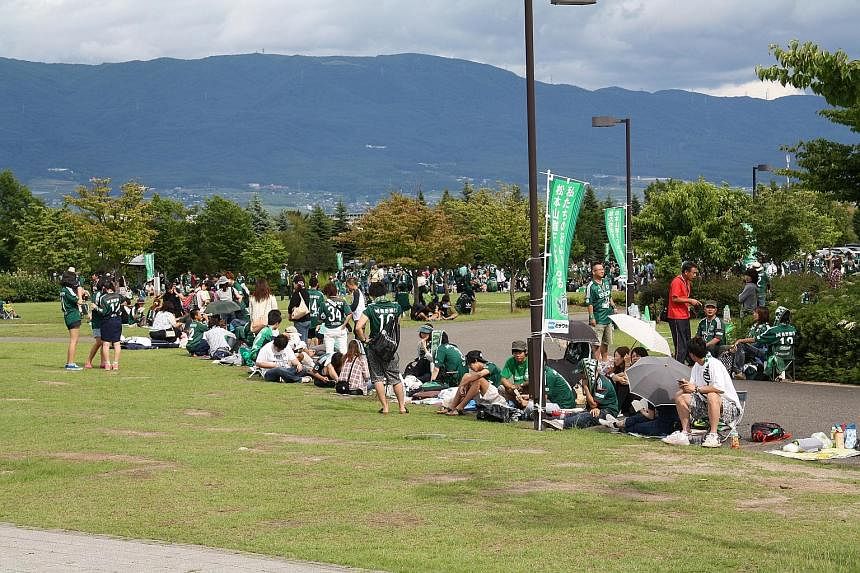It is match day in Matsumoto and the city, with a population of about 240,000, comes to life as thousands of football fans paint the town green.
This is the representative colour of local club Matsumoto Yamaga, whose green banners are unfurled on the roads leading to their Alwin Stadium, where the fans gather outside the premises four hours before kick-off against fellow J-League Division One (J1) newcomers Shonan Bellmare.
Even the pubs start serving Yamaga beer, which also comes in green. The brew could taste better but the people's passion is nonetheless infectious.
Yet, four years ago, Yamaga were not even in the J-League. In 2011, they were promoted from their regional league to J-League's Division Two, and now find themselves in the company of J1 giants like Urawa Reds and Kashima Antlers.
In a way, the rapid rise of Yamaga is reminiscent of the runaway success of top-tier Japanese football. After all, the J-League was introduced only in 1993, three years before the S-League.
In 22 years, however, it has become one of Asia's biggest football leagues, one which funnels a steady stream of talented players into the national team, and even top European leagues.
There are many reasons behind its success story but, according to league official Wataru Endo, much of it has to do with the core principles the league adheres to.
For example, clubs are strongly encouraged to engage the community. They have been renamed after cities to build rapport with locals.
Nissan Motor FC became Yokohama Marinos while Yomiuri FC became Verdy Kawasaki (now Tokyo Verdy).
This rapport can be seen at Yamaga, where about 100 volunteers arrive six hours before kick-off to "touch up" the stadium, such as placing banners, cleaning the seats and setting up rubbish bins.
Said Takefumi Sakakibara, 47: "I volunteer to give back to the city and the team. I've always wanted to watch J-League teams and I'm really excited they got promoted."
Clubs are also encouraged to seek local sponsors and organise activities like clinics and school visits to build their fan base.
With more than 4,000 of such activities happening countrywide annually, such grassroots involvement has paid off, as fans show up in droves.
Two years after the J-League was formed, average attendance rose from 7,000 to 19,000.
It speaks volumes that in 2013, clubs received $1.35 million in broadcasting revenue, yet that accounted for less than 10 per cent of their overall income.
The league also recognises the importance of star names, both to bring in the crowds and to raise the level of play.
As Yamaga vice-president Yoshiyuki Kato said: "It's very difficult to grow if you play with the same players every day. We always have something to learn from foreign cultures and style of play."
In the league's nascent years, recognisable names like Brazilian stars Zico, Bebeto and Dunga, and English striker Gary Lineker played significant roles in growing the sport.
Youth development is not forgotten. Each club must have an academy, coaches and training pitches for their youth teams, and academy activity plans must be approved by the J-League.
But it is not without its critics, who point to the country's modest success in the Asian Champions League, the elite tournament in Asian club football. No J-League team has won the competition more than once, with the last victory coming in 2008.
However, the counter-argument is that the Japanese national team have won the Asian Cup a record four times, with three of the four triumphs coming after the formation of the J-League.
With five World Cup Finals appearances, they are second only to South Korea, who have nine.
Moving forward, the J-League is hoping to extend its reach in Asia, such as by bringing in more South-east Asian players to Japan.
Said the league's international relations official Kei Koyama: "There is a lot of potential in Asian football.
"It will take time to catch up with the Europeans... we have to raise the level of play in Asia first."
Never resting on its laurels, up is the only way for football in the Land of the Rising Sun.

